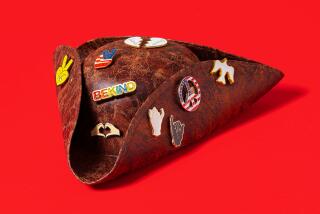Addicted to ‘friends’
- Share via
Thwarting the age-old theory (and high school coping mechanism) that unpopularity in adolescence portends wealth and success in adulthood, a new study from the University of Essex in Britain has shown that the more friends you have in school, the more money you’ll earn later.
Beginning in 1957, American male high school seniors were asked to name up to three people they considered friends. Those “nominations” were tallied and compared, and then the boys were interviewed over time. Researchers found that for every “extra” friend a student had -- someone who nominated him despite not being reciprocally nominated -- his salary was 2% higher 35 years later.
I’m torn between two opposing reactions: no way; no duh.
I suppose the “no way” response reflects my need to believe that high school has no bearing on the rest of one’s life (i.e. the nerds become billionaires and the cheerleaders end up appearing before Judge Judy in some kind of pet-custody dispute).
Still, the “no duh” in me knows better. Even though the researchers noted that when it came to earning power, intelligence and level of education were bigger factors than popularity, let’s not kid ourselves. If you want to get ahead in life, social skills and networking are easily as powerful as talent and hard work. After all, that old chestnut, “It’s not what you know, it’s who you know,” didn’t come out of nowhere.
Maybe that’s why we now find ourselves in the age of Friendaholism. Call me geriatric or Amish or just uncool (I gave all that away last week when I admitted I thought Ne-Yo was a sushi place), but I think of a friend as an actual person with whom I have an actual history and who I enjoy actually seeing. It seems, however, that this is no longer the definition of “friend.”
A friend is someone on your Facebook page or in your Twitter circle. A friend is someone you might know personally but who could just as easily be the friend of a friend of some other Facebook friend you don’t actually know. In any case, these friends have been assigned value not necessarily because of anything they’ve actually done with you or for you, but because, well, they just exist in the world and so do you.
--
The idea of friendship, at least among the growing population of Internet social networkers, is to attain as many of these not-really-friends as possible. Hence, the alcoholism analogy, which I don’t make lightly. Like cheap wine, “friends” provide a high that can only be sustained by acquiring more and more of them. Quantity trumps quality.
Recently, I heard a woman complaining that Facebook’s 5,000-friend limit was too low for her vast reserve of social contacts. At the time, this struck me as advanced-stage friendaholism, but in light of the University of Essex study, I’m wondering if the joke is on me. Is her salary 2% higher for every extra friend she has on Facebook? If so, why is she driving a used Honda?
I can’t presume to know the answer. But it’s worth noting how many people these days regard “friends,” or at least the collective concept of friends, as a form of currency.
That’s not necessarily a bad thing. Social ties, whether they take the form of bona fide BFFs or people you air kiss at a party once a year, grease the wheels of life. They also provide the invaluable -- and often unheralded -- service of bearing witness to our lives. Without friends, we’d have fewer memories, not to mention less to remember.
Granted, even on Facebook, the currency of friends comes in different denominations. If real-life pals feel like $100 bills, those random strangers amount to little more than loose change. But the fact remains that here, as in other economic markets, the dollar is losing its value. Not only do these “friendships” represent a shortcut to intimacy (thereby rendering it phony), they require a lot of maintenance. You have to keep Twittering, instant-messaging and texting lest you become a bad “friend.” As a result, for friendaholics and those showing signs of friendaholism, socializing is less akin to sharing life experiences than to sustaining a never-ending volley with multiple partners in a giant electronic tennis game.
The subjects in the University of Essex study may have had little trouble naming three friends back in 1957. But in a poll conducted in 2004 in which Americans were asked how many “close confidants” they had, the most common answer was zero. As depressing as that is, it’s hardly surprising. In the mind of the friendaholic, having one friend you can count on apparently just isn’t as fun as having thousands of friends to count up. Considering how labor intensive the new friendship frontier is, maybe people with wider social circles do deserve to earn higher salaries.
Too bad one thing money can’t buy is a real friend.
--







